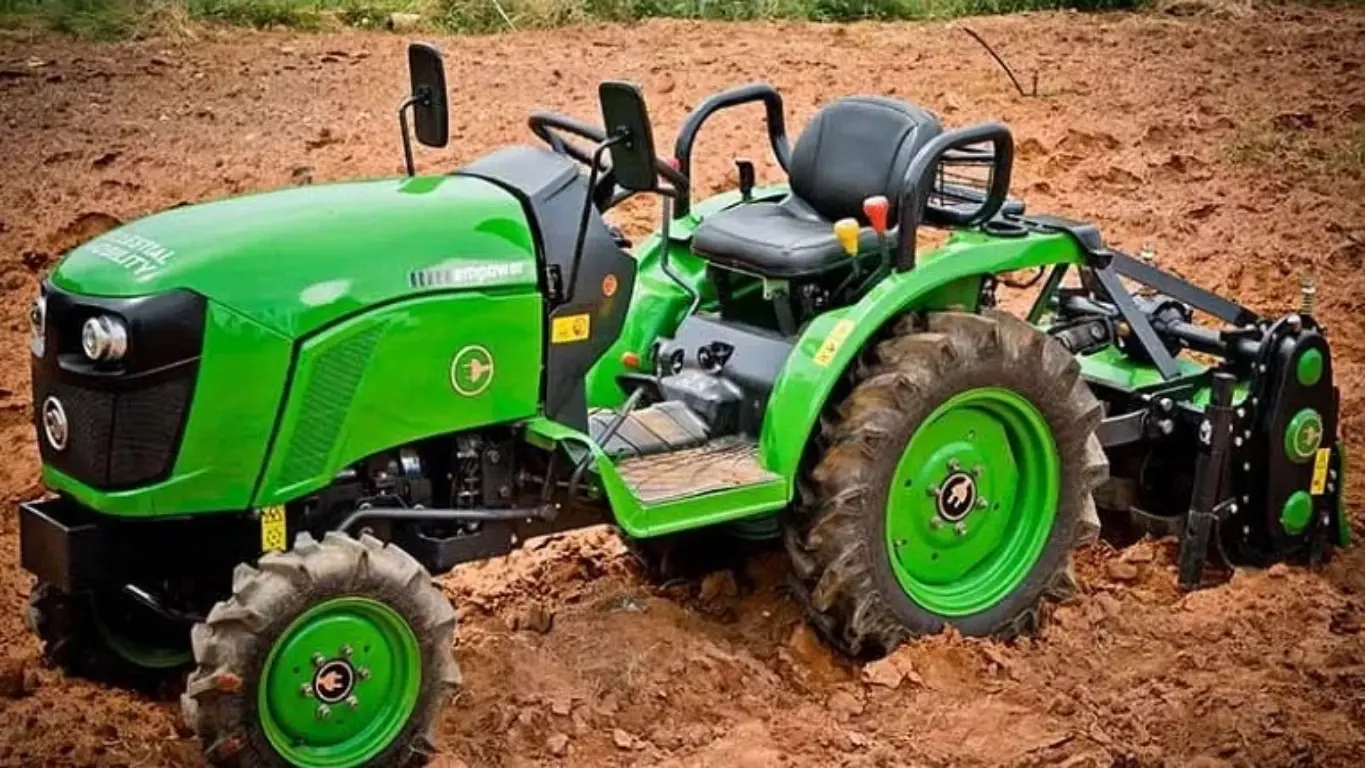Policy Push Needed for India's E-Tractor Revolution
9865 Views
Updated On:
India aims to boost e-tractor adoption with policy support, bridging cost gaps and strengthening emission standards for sustainability.
Key Highlights
- India sold 1.66M EVs in FY24, but e-tractor sales lag.
- E-tractors are vital for green growth, in the rural economy.
- Policy gaps hinder e-tractor affordability and emissions.
- Financial incentives, GST reduction, and subsidies on electricity are crucial.
- Strengthening emission standards accelerates e-tractor adoption.
Despite India's significant strides in electric vehicle (EV) adoption, with a record 1.66 million EVs sold in FY24, agricultural e-tractors remain largely overlooked. While electric cars and buses saw a notable increase in sales, only a handful of e-tractors made their way into the market. This raises questions about tapping into the potential of e-tractors, crucial for India's green growth and economic prosperity.
Also Read: Government Offers Rs 24,000 Subsidy on Tractor Disc Plow Purchases
A Neglected Opportunity
The introduction of e-tractors in India more than three years ago has not translated into widespread adoption, despite the country's substantial annual tractor sales, serving as a barometer for rural economic growth. Tractors, consuming a significant portion of high-speed diesel, are bound by emission standards that lag behind those of road vehicles. This delay in upgrading emission standards not only hampers environmental efforts but also affects farmer health and agricultural costs.
The Power and Petroleum Corporation (PPAC) data reveals that tractors, which recently consumed an average of 4.8% of India's high-speed diesel, nearly match the consumption of buses and surpass three-wheelers by fourfold. The International Council on Clean Transportation (ICCT) research from 2016 projected that emissions from off-road vehicles like tractors could surpass those from on-road vehicles by 2030 if not regulated effectively.
Global Leadership Potential
With a strong domestic market and demanding emission regulations in export destinations like the United States and the European Union, India's tractor industry stands at the brink of global leadership in off-road electrification. However, realizing this potential requires concerted policy actions to drive manufacturing and adoption of e-tractors.

The Indian tractor industry, one of the largest globally, accounts for about a third of the global production. Revenue from exports constitutes a significant portion of the industry's total revenue, with a quarter of India’s exports heading to the United States, a market where goals for zero-emission tractors are emerging in some states.
Policy Recommendations
Introduce Financial Incentives: The lack of incentives under the current FAME-II scheme for e-tractors hinders their cost competitiveness. Aligning incentives with those for on-road EVs and offering purchase incentives can bridge the cost gap between electric and diesel tractors.
While the upfront purchase cost for e-tractors is higher than that of diesel tractors, analysis by the ICCT suggests that offering purchase incentives could substantially improve their cost competitiveness. Introducing incentives consistent with those for on-road EVs in the upcoming FAME-III scheme could eliminate the total cost of ownership gap between diesel and electric tractors.
Reduce GST and Insurance Premiums: Imposing a reduced GST rate of 5% and offering discounted insurance premiums for e-tractors, akin to on-road EVs, can significantly enhance their affordability.
Currently, e-tractors are taxed at the same rate as diesel tractors (12% GST) and do not enjoy the insurance premium discounts available for on-road EVs. Bridging this gap in taxation and insurance can make e-tractors more economically viable for farmers.
Offer Subsidized Electricity: Providing discounted or free electricity for agricultural use, similar to existing state policies, can offset the operational costs of e-tractors, making them more economically viable.
As electricity constitutes the largest cost component over the lifetime of an e-tractor, offering subsidized electricity can entirely bridge the total cost of ownership difference between electric and diesel tractors.
Strengthen Emission Standards: Accelerating the implementation of Bharat Stage (CEV/Trem) V standards for tractors, including those with lower engine power, can mitigate emissions and align with global standards.
India's current emission standards for tractors (BS CEV/Trem IV) apply only to those with engine power exceeding 37 kW. Including tractors with engines below this power threshold in the BS-IV regulation without waiting for the BS V standard in 2026 can expedite emission reductions and technological advancements.
Bridging the Gap
Addressing data gaps and understanding tractor usage patterns are imperative for informed policy interventions. Primary surveys can illuminate the agricultural and social aspects of tractor operations, enabling tailored strategies to accelerate e-tractor adoption.
Also Read: India's Tractor Market Set to Rise, Projected to Hit $12.7 Billion by 2030
CMV360 Says
With timely policy interventions, both at the central and state levels, India can harness the potential of e-tractors to support its green growth agenda. By supporting innovation and sustainability in agriculture, policymakers can pave the way for a greener and more prosperous future. The descendants of the green revolution can lead the charge towards a sustainable agricultural landscape in India.